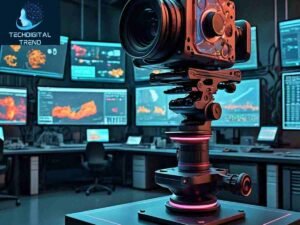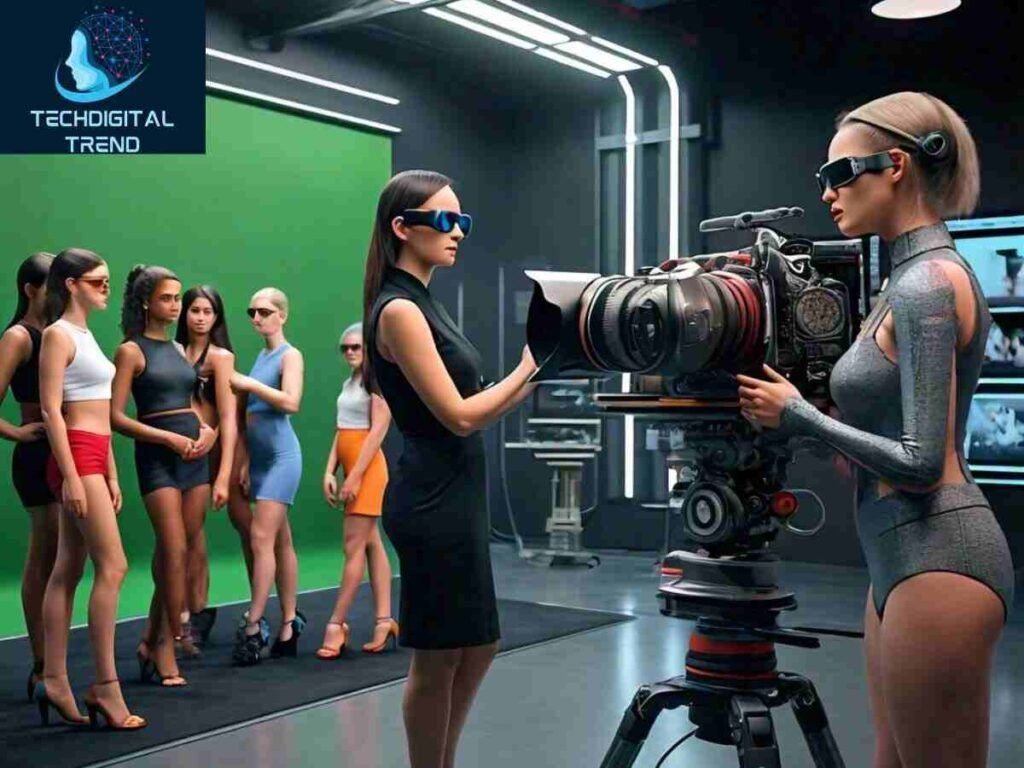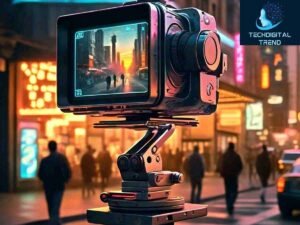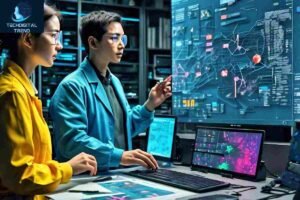Table of Contents
ToggleThe Digital
Photography has changed a lot since it began. It started with cumbersome cameras and chemical processing. Then, the digital revolution came and made the art form open to all. One big advance drives this change. It’s the use of computer vision in photography. In this article, we’ve explored the amazing journey of how computer vision changed photography. It’s revolutionized how images are captured, processed, and manipulated.
The Dawn of Photography: A Historical Overview
Invention of the Camera Obscura.
- Photography’s roots go back to ancient times. They started with the camera obscura. It was a simple device that projected an image through a small hole or lens. This concept laid the foundation for the development of modern cameras.
Early Photographic Techniques
- The 19th century saw the birth of photography as we know it today. Pioneers like Joseph Nicéphore Niépce and Louis Daguerre introduced the first practical photo processes. These early techniques were daguerreotypes and calotypes. They needed long exposure times and careful chemical processing.
Birth of The Digital Photography
- The late 20th century saw digital photography arrive. It marked a big change in how images were captured, stored, and shared. The digital camera was invented. Then, high-resolution cameras were added to smartphones. These changes made photography accessible to millions worldwide.
The Emergence of Computer Vision
What is computer vision?
- Computer vision is a part of AI. It lets machines interpret and analyze real-world images. It includes many techniques. They include image recognition, object detection, and scene understanding.
Evolution of Computer Vision in Photography
- Computer vision has been integrating into photography bit by bit. This has been driven by progress in hardware, software, and machine learning. It started with early experiments with image software. Then, came the development of smart AI camera systems. The evolution of computer vision in photography has been revolutionary.
Key Milestones and Innovations
- Important milestones mark the evolution of computer vision in photography. They include the rise of facial recognition. It’s changed how we’ve capture and organize images of people. Also important is the introduction of smart scene recognition algorithms. They adjust camera settings based on environmental conditions.
Applications of Computer Vision in Photography.
Image classification and recognition
- Computer vision enables automated image classification and recognition. It lets photographers quickly find and sort large photo collections. They can do this based on content, themes, or metadata.
Image Enhancement and Restoration
- Advanced computer vision algorithms can improve images. They do this by reducing noise and sharpening details. They also correct exposure and color. Additionally, computer vision techniques are used in digital restoration projects. They revive old and damaged photographs.

Automated Editing and Post-Processing
- Computer vision is crucial. It automates repetitive tasks in image editing and post-processing. These tasks include cropping, resizing, and retouching. AI-powered editing tools offer photographers many creative options. They can use them to enhance their images with little effort.
Impact on professional photography
Revolutionizing Photojournalism
- Computer vision technology has brought in a new era of photojournalism. It enables real-time image analysis and captioning. These tools let journalists capture and share news events faster. They do so more efficiently than before. News cycles move at breakneck speed. Quickly processing and sharing field images can greatly affect how stories are reported. It also affects how the public understands them.
- Algorithms for computer vision can tag images with relevant metadata. This data includes location, time, and subject. It makes it easier for journalists to search and find photos in their archives. This streamlines the editing process. It ensures that the right images are sent to audiences quickly.
Transforming Fashion and Advertising Photography
- The digital computer vision is changing how images are made, selected, and used. It’s revolutionizing fashion and advertising photography. Brands and advertisers are using computer vision algorithms. They use them to analyze consumer preferences and predict trends. They also use them to create targeted visual campaigns that resonate with their audience.
- One the digital computer vision is making a significant impact is in image recognition and product placement. By analyzing images and the digital videos on social media and e-commerce sites, brands can find popular products and trends. They can do this in real-time. This lets them tailor their marketing strategies.
Enhancing Wildlife and Nature Photography
- Wildlife and nature photographers have many chances to use the digital computer vision. It lets them record and save the beauty of the natural world. Photographers can capture stunning images by putting cameras with computer vision in remote locations. The digital cameras allow them to record elusive species and rare habitats that would otherwise be hard to access.
- The digital vision technology enables automated species identification and tracking. It lets photographers catalog and check wildlife with precision and accuracy. This provides valuable data for conservation. It also raises awareness about protecting biodiversity and ecosystems.
- Also,the digital computer vision algorithms can analyze data from photos. This data includes temperature, humidity, and vegetation density. It’s providing insights into ecosystem health and resilience. By documenting environmental changes over time, photographers can help science and advocacy. They’re focusing on addressing climate change and habitat loss.
Advancements in smartphone photography.
Integration of Computer Vision Features
- Smartphones have advanced camera systems. They use computer vision technology. This technology gives them many features. These features enhance the digital photography experience for users. It’s going from automatic scene recognition and smart framing to AR overlays and virtual makeup effects. Computer vision is changing how we capture and share moments on our phones.
- Portrait mode is one of the most popular uses of computer vision in smartphone photography. It uses depth-sensing technology to make professional-looking portraits with blurred backgrounds. Smartphones can accurately detect the depth of objects. This lets them simulate the shallow depth of field seen in high-end cameras. The result is stunning portraits that stand out on social media feeds.
- Additionally, smartphones now have AI-powered cameras. They can analyze scenes in real-time and adjust settings accordingly. The digital camera features adjust exposure in low light. They also enhance details in high-contrast scenes. They ensure that users can take great photos in any environment.
AI-Powered Camera Systems
- AI-powered camera systems on smartphones use computer vision algorithms. They offer many new features and skills that make photography better. The systems are advanced. They can detect and track subjects precisely. This ensures that every shot is perfectly focused and framed.
- AI-powered camera systems have a key advantage. They can improve image quality. They do this through computational photography techniques. Smartphones analyze many frames and combine them into one image. This reduces noise, improves range, and adds detail. The result is stunning photos that rival those from professional cameras.
- Also, AI-powered cameras let users be creative. They offer many shooting modes and effects. They can add artistic filters and overlays. They can make immersive 3D photos and videos. These smart camera features let users unleash their imagination and capture unique moments.
Democratization of Photography
- Adding computer vision to smartphone cameras has democratized photography. It has made it more accessible and inclusive than ever before. Social media and online communities have risen. They let amateur photographers share their passion with a global audience. They can also connect with like-minded enthusiasts worldwide.
- Smartphones have advanced cameras. They let users capture and share their creativity in real-time. They can capture everyday moments. They can explore new perspectives. They can express their artistic vision. Smartphones are removing barriers to entry. They’re empowering users with powerful tools and technologies. They’re democratizing photography. They’re transforming how we see and experience the world around us.
Challenges and Ethical Considerations
Bias in algorithmic decision making
- One of the major challenges facing computer vision in photography is the issue of bias in algorithmic decision-making. Computer vision algorithms have remarkable capabilities. But, they’re not immune to biases and prejudices. These can influence their decisions. This is especially true in areas like facial recognition and image classification.
- Research has shown that computer vision algorithms can be biased. They can be biased against certain demographic groups. This bias leads to inaccurate or unfair results. For instance, facial recognition systems perform poorly on people with darker skin tones. This leads to misidentifications and wrongful arrests.
Privacy Concerns
- Many have adopted computer vision technology. However it raises big concerns about privacy and surveillance. the digital cameras with AI can capture and analyze personal data without consent. This poses risks to privacy rights. These systems can track people in public. They can also check online activities and analyze facial expressions and emotions. They have the potential to invade our privacy in new ways.
- To address these concerns, policymakers must make strong data privacy rules. The rules must govern the collection, storage, and use of visual data captured by computer vision systems. Also, developers must add privacy tech like encryption, anonymization, and differential privacy. They must add these to their products and services to protect user privacy. The tech also ensures that personal data is handled.
Digital manipulation and authenticity
- AI-powered image editing tools are on the rise. They raise questions about the truth of photos. Edited or fake images can look real. This challenges the viewer’s perception of truth. Deepfake technology and other the digital manipulation are spreading. It’s now hard to tell fact from fiction in the digital age.
Future Trends and Innovations
Augmented Reality and Mixed Reality Experiences
- Computer vision will mix with augmented reality (AR) and mixed reality (MR). This mix is set to revolutionize photography by blending virtual elements with the real world. It will make immersive and interactive experiences for photographers and viewers. AR and MR in photography offer many possibilities. These include photo galleries and exhibitions. They also include storytelling experiences and it’s AR filters. The options are limitless.
Personalized photography solutions
- Advancements in computer vision and AI are driving the development of personalized photography solutions tailored to individual preferences and needs. These tools are automated. They edit and curate photos. They also give personalized recommendations and help users find new content. They help users improve their photography and find chances for creativity.
- Personalized photography solutions use machine learning to analyze user preferences, behavior, and engagement. This lets them deliver customized experiences and recommendations that resonate with each user. It offers new editing techniques. It recommends relevant photography tutorials. It makes personalized photo galleries. These smart tools help users unlock their full creative potential and reach their photography goals.
Collaboration with Other Technologies
- The future of computer vision in photography lies in working with other new technologies. These include blockchain for secure image authentication, 5G for smooth data transfer, and quantum computing for faster image processing. By combining computer vision with these other technologies, we can unlock new possibilities. They will push the limits of what’s possible in the digital photography.
- 5G technology promises to revolutionize the digital photography. It enables fast data transfer and low-latency communication between devices. This will allow photographers to capture and share images in real-time with great speed and efficiency. Whether it’s live-streaming events, remote collaboration with other photographers, or instant cloud-based backups, 5G technology will unlock new opportunities for photographers to connect, create, and share their work with the world.
Conclusion
Adding computer vision to photography has changed how we capture, process, and share images. It has revolutionized professional photography, smartphone photography, and more. The digital technology offers big chances for innovation and creativity. But, it also raises key ethical and privacy concerns. We must address them to ensure responsible and clear use. We can embrace computer vision. It lets us collaborate with other new technologies. This unlocks new possibilities and capabilities. They push the boundaries of what’s possible in the digital photography. They shape the future of visual storytelling and art for generations to come.
Open this link: Tap to here















